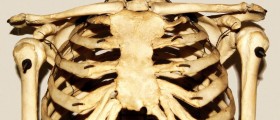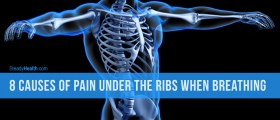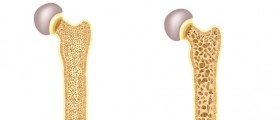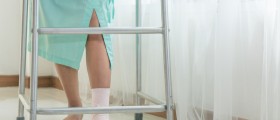
The sternum is also known as a breastbone. This long and flat bone very much resembles the letter T in shape. This bone got its name from the Greek word stermon, which means chest or a breastbone. The breastbone is located in front of the heart and at the very center of the chest, where it connects the rib bones using the cartilage. The breastbone, ribs and cartilage are actually forming the rib cage, which plays one extremely important function in human health. The rib cage actually protects the most vital organs of the body, heart and lungs, as well as the blood vessels, from any kind of physical trauma.
Anatomy of the sternum
The sternum itself is a long flattened bone, but it can also be divided into the particular parts of which everyone plays an important role in the overall anatomy and structure. Sternum consists of three main parts. The manubrium is the broad and upper part of the sternum. Close to the abdomen, it has a quadrangular shape and articulates with the clavicles and the first two ribs. Body of the sternum is much lengthier, narrower and thinner part of the breastbone, most widely at the lower end. Xiphoid process is actually a cartilaginous extension situated at the lower part of the sternum. In an adult human, this part of the breastbone is typically ossified. Ossification is a process of laying down new bone material and a bone tissue formation. By age 15 to 29, this smallest part binds to the body of the sternum with a fibrous joint, and it is non-movable.
Fractures of the sternum
Sternal fractures are physical traumas located in the center of the chest. Fractures of the sternum are not so common, and they usually result from accidents in which the person’s chest is forced into some kind of obstacle. For example, fracture of the sternum typically occurs in car accidents when a driver’s chest is forced into the steering wheel. In most of the cases, the sterna angle is hurt in these accidents. People engaged in contact sports such as rugby and football, are also at the high risk of sterna fractures. The junction of the manubrium and the body of the sternum forms this angle. If a facture occurs, it may result in pulmonary contusions, or bruised lung tissue, damage to blood vessels, myocardial rupture, abdominal injuries, etc. The symptoms of sterna fracture include a crunching sound made when broken bone ends rub together, pain, tenderness, bruising and even difficulty breathing.









-Test-And-What-Do-The-Results-Mean_f_280x120.jpg)







Your thoughts on this
Loading...